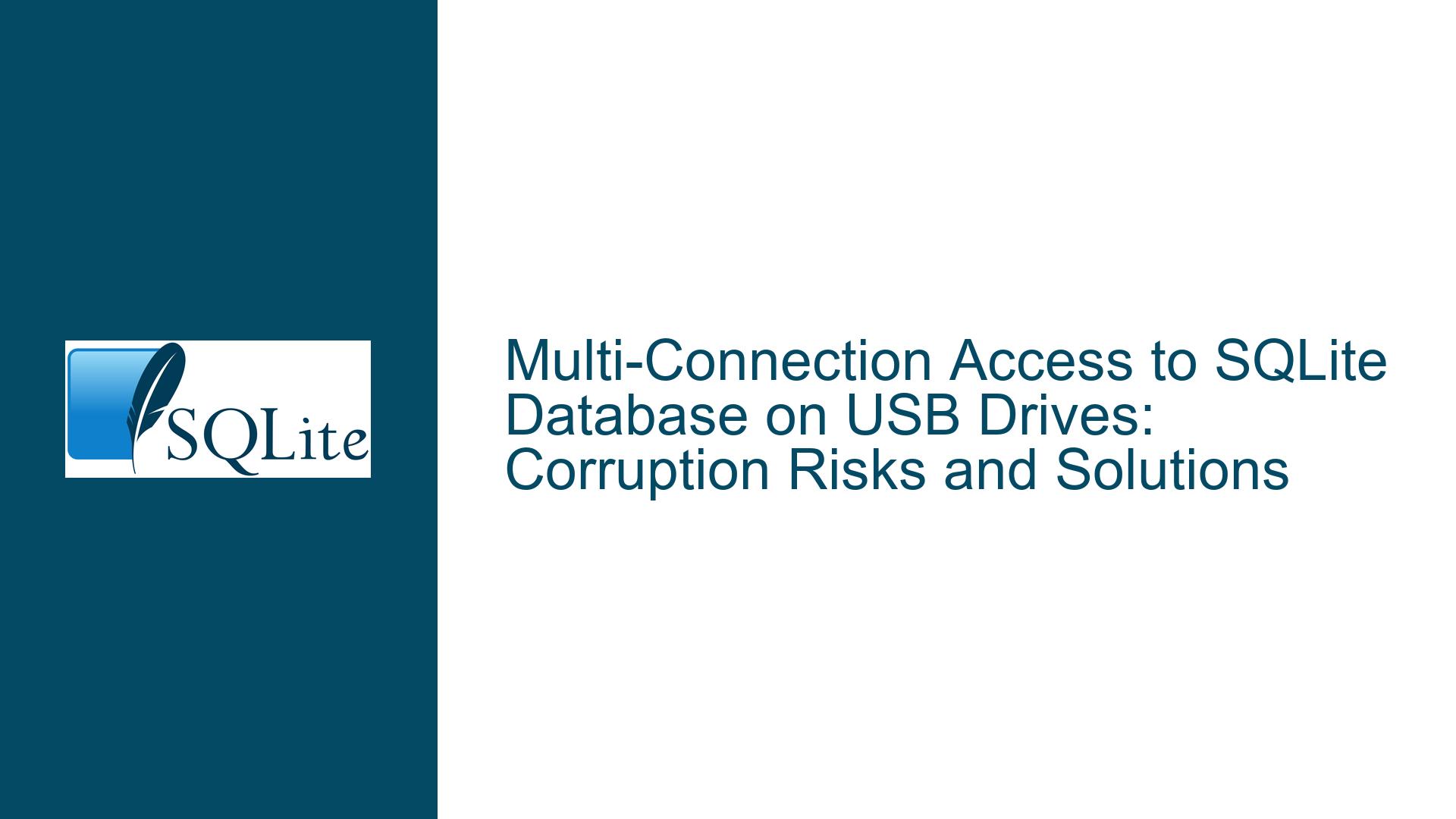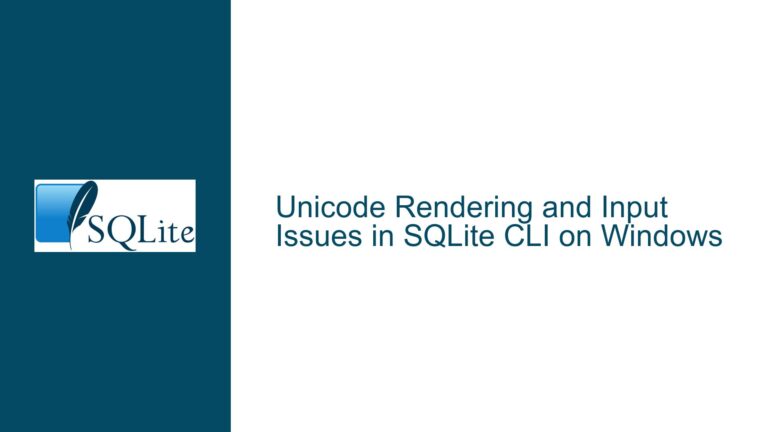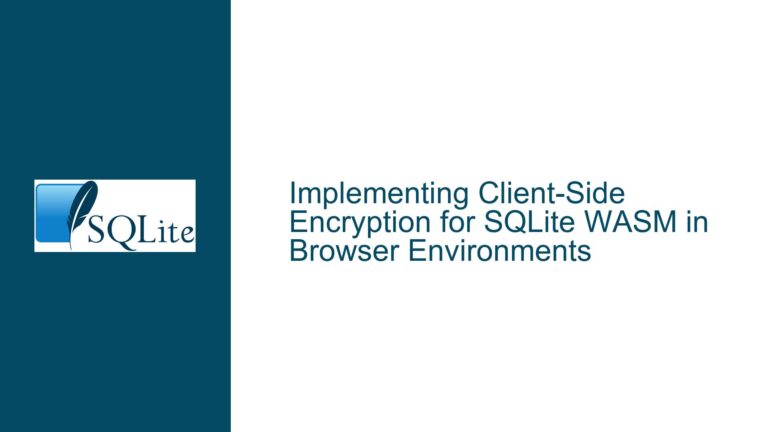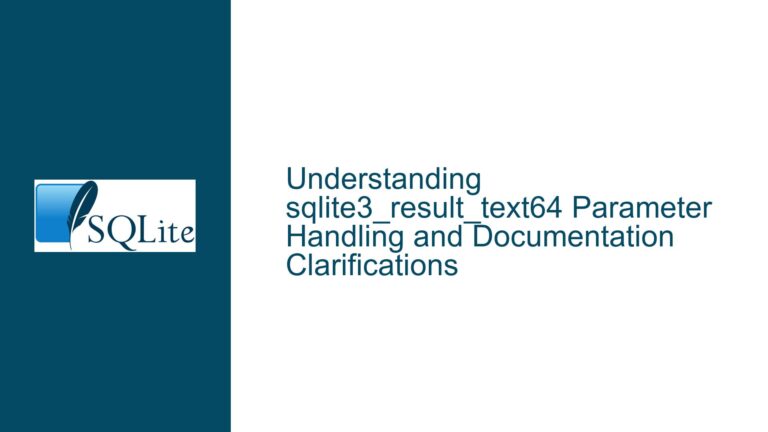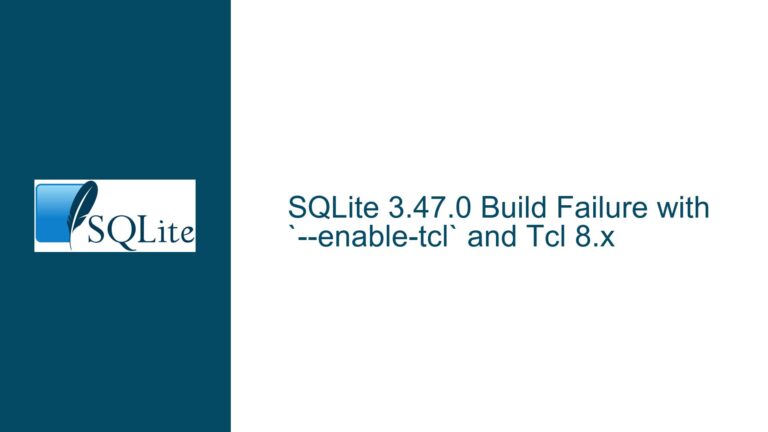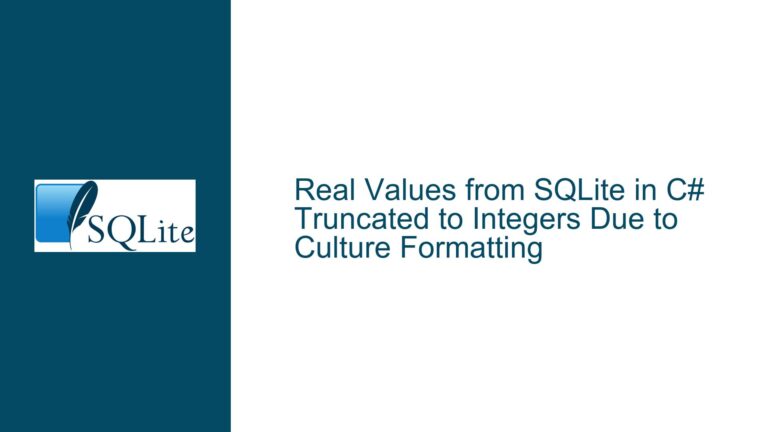Multi-Connection Access to SQLite Database on USB Drives: Corruption Risks and Solutions
Understanding the Impact of EXCLUSIVE Locking Mode and WAL on USB Drive Databases
The core issue revolves around the challenges of maintaining database integrity on USB drives, particularly when using SQLite with multiple connections. The primary concern is the corruption of the database when the USB drive is unexpectedly removed during write operations. The discussion highlights the use of specific SQLite PRAGMA settings, such as PRAGMA MMAP_SIZE=0, PRAGMA locking_mode=EXCLUSIVE, PRAGMA JOURNAL_MODE=WAL, and PRAGMA synchronous=NORMAL, to mitigate corruption risks. However, these settings also prevent multi-threaded access to the database, which is a significant limitation for applications requiring concurrent read operations.
The combination of EXCLUSIVE locking mode and WAL journaling appears to reduce the frequency of corruption during surprise removals, but the underlying mechanisms are not fully understood. This raises questions about the interplay between SQLite’s locking mechanisms, journaling modes, and the behavior of USB drives, especially when dealing with consumer-grade magnetic drives formatted with ExFAT, HFS+, or NTFS. The discussion also touches on the limitations of consumer-grade hardware, such as drives that falsely report completed write operations, and the implications of using different file systems on database integrity.
Exploring the Causes of Database Corruption on USB Drives
The primary cause of database corruption on USB drives is the unexpected removal of the drive during write operations. This is exacerbated by the behavior of consumer-grade drives, which may not reliably flush data to disk when instructed. The use of WAL journaling in SQLite introduces additional complexity, as it relies on multiple files (the main database file and the WAL file) to maintain consistency. When the drive is removed unexpectedly, these files may become out of sync, leading to corruption.
The EXCLUSIVE locking mode plays a crucial role in reducing corruption by ensuring that only one connection can access the database at a time. This eliminates the need for shared memory (SHM) files, which are used in WAL mode to coordinate between multiple connections. However, this also prevents multi-threaded access, which is a significant limitation for applications requiring concurrent read operations. The discussion suggests that the EXCLUSIVE mode may enforce stricter synchronization between the main database file and the WAL file, reducing the likelihood of corruption during surprise removals.
Another contributing factor is the choice of file system. NTFS, a journaling file system, is more robust against interrupted modify operations compared to ExFAT or HFS+. However, the need for cross-platform compatibility often necessitates the use of ExFAT, which lacks the robustness of NTFS. Additionally, the "Quick Removal" setting on Windows, which disables write caching, can further increase the risk of corruption, especially on NTFS-formatted drives.
Comprehensive Troubleshooting Steps and Solutions for USB Drive Database Integrity
To address the challenges of maintaining database integrity on USB drives, several steps can be taken. First, it is essential to understand the limitations of consumer-grade hardware and the implications of using different file systems. While NTFS offers better robustness, ExFAT is often the only viable option for cross-platform compatibility. In such cases, it is crucial to ensure that the "Quick Removal" setting is disabled to enable write caching, which can improve performance and reduce the risk of corruption.
The use of EXCLUSIVE locking mode in combination with WAL journaling can significantly reduce the frequency of corruption during surprise removals. However, this comes at the cost of preventing multi-threaded access to the database. For applications requiring concurrent read operations, alternative approaches must be considered. One possible solution is to implement a custom locking mechanism that allows multiple threads to read from the database while ensuring that write operations are performed exclusively. This would require careful coordination between threads to prevent conflicts and ensure data consistency.
Another approach is to use a different journaling mode, such as DELETE or TRUNCATE, which may offer better performance and reliability on USB drives. However, these modes do not provide the same level of concurrency as WAL and may not be suitable for all applications. Additionally, setting PRAGMA synchronous=FULL can further enhance data integrity by ensuring that all writes are flushed to disk before a transaction is considered complete. While this may impact performance, it can significantly reduce the risk of corruption during unexpected drive removals.
In cases where corruption does occur, it is essential to have a robust recovery mechanism in place. This may include regular backups of the database, as well as tools for detecting and repairing corruption. SQLite provides several utilities, such as sqlite3_db_cacheflush and sqlite3_wal_checkpoint, which can be used to ensure that data is properly flushed to disk and that the WAL file is checkpointed regularly. Additionally, the use of checksums or other integrity checks can help detect corruption early and prevent further data loss.
Finally, it is important to educate users about the risks of removing USB drives without properly ejecting them. While this may not always be feasible, providing clear instructions and warnings can help reduce the likelihood of corruption. Additionally, implementing software safeguards, such as detecting when a drive is about to be removed and pausing write operations, can further mitigate the risk of data loss.
In conclusion, maintaining database integrity on USB drives is a complex challenge that requires a combination of careful configuration, robust recovery mechanisms, and user education. By understanding the limitations of consumer-grade hardware and the implications of different SQLite settings, it is possible to significantly reduce the risk of corruption and ensure the reliability of your database.
